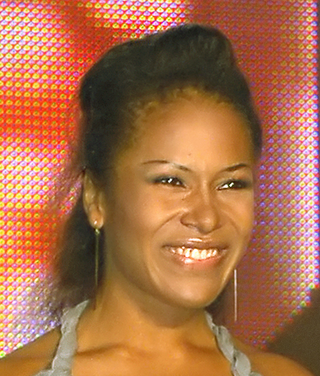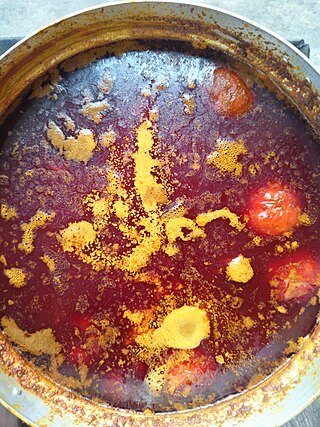Related Research Articles

Maryland is a state in the Mid-Atlantic region of the United States. The state borders Virginia to its south, West Virginia to its west, Pennsylvania to its north, Delaware and the Atlantic Ocean to its east, and the national capital of Washington, D.C. to the southwest. With a total area of 12,407 square miles (32,130 km2), Maryland is the ninth-smallest state by land area, and its population of 6,177,224 ranks it the 18th-most populous state and the fifth-most densely populated. Maryland's capital is Annapolis, and the most populous city is Baltimore. Occasional nicknames include Old Line State, the Free State, and the Chesapeake Bay State. It is named after Henrietta Maria, the French-born queen of England, Scotland, and Ireland during the 17th century.
This is a list of notable persons by nationality.

African Jewish communities include:
Lists of Americans are lists of people from the United States. They are grouped by various criteria, including ethnicity, religion, state, city, occupation and educational affiliation.
Nigerian Americans are Americans who are of Nigerian ancestry. The number of Nigerian immigrants residing in the United States is rapidly growing, expanding from a small 1980 population of 25,000. The 2022 American Community Survey (ACS) estimated that 712,294 residents of the U.S.A were of Nigerian ancestry. The 2019 ACS further estimated that around 392,811 of these (85%) had been born in Nigeria. Which puts the total Nigerian American population a little over 400,000.

African emigrants to Italy include Italian citizens and residents originally from Africa. Immigrants from Africa officially residing in Italy in 2015 numbered about 1,000,000 residents. Afro-Italians (Afroitaliani) are Italians born and are raised in Italy, citizen of African descent or of mixed African and Italian roots.

The writing systems of Africa refer to the current and historical practice of writing systems on the African continent, both indigenous and those introduced. In many African societies, history generally used to be recorded orally despite most societies having developed a writing script, leading to them being termed "oral civilisations" in contrast to "literate civilisations".
African immigration to the United States refers to immigrants to the United States who are or were nationals of modern African countries. The term African in the scope of this article refers to geographical or national origins rather than racial affiliation. From the Immigration and Nationality Act of 1965 to 2017, Sub-Saharan African-born population in the United States grew to 2.1 million people.
African Australians are Australians descended from any peoples of Sub-Saharan Africa, including naturalised Australians who are immigrants from various regions in Sub-Saharan Africa and descendants of such immigrants. At the 2021 census, the number of ancestry responses categorised within Sub-Saharan African ancestral groups as a proportion of the total population amounted to 1.3%.
Lists of people from African Union states are lists of people from each state of the African Union.

There have been a variety of ethnic groups in Baltimore, Maryland and its surrounding area for 12,000 years. Prior to European colonization, various Native American nations have lived in the Baltimore area for nearly 3 millennia, with the earliest known Native inhabitants dating to the 10th millennium BCE. Following Baltimore's foundation as a subdivision of the Province of Maryland by British colonial authorities in 1661, the city became home to numerous European settlers and immigrants and their African slaves. Since the first English settlers arrived, substantial immigration from all over Europe, the presence of a deeply rooted community of free black people that was the largest in the pre-Civil War United States, out-migration of African-Americans from the Deep South, out-migration of White Southerners from Appalachia, out-migration of Native Americans from the Southeast such as the Lumbee and the Cherokee, and new waves of more recent immigrants from Latin America, the Caribbean, Asia and Africa have added layers of complexity to the workforce and culture of Baltimore, as well as the religious and ethnic fabric of the city. Baltimore's culture has been described as "the blending of Southern culture and [African-American] migration, Northern industry, and the influx of European immigrants—first mixing at the port and its neighborhoods...Baltimore’s character, it’s uniqueness, the dialect, all of it, is a kind of amalgamation of these very different things coming together—with a little Appalachia thrown in...It’s all threaded through these neighborhoods", according to the American studies academic Mary Rizzo.
West Africans in the United States are Americans with ancestry from West Africa. They include:

Afro-Ukrainians or Black Ukrainians, are Ukrainians of Sub-Saharan African descent, including Black people who have settled in Ukraine. Black Ukrainians are multi-lingual, knowing both Russian and Ukrainian in addition to their native languages, and are aware of the cultural conflict in Ukraine between the Ukrainian and Russian languages. The population of Afro-Ukrainians is rather small and is mostly concentrated in the major cities of Ukraine, such as Kyiv.
The history of Koreans in Baltimore dates back to the mid-20th century. The Korean-American community in Baltimore began to grow in the 1960s and reached its peak between the 1970s and 1990s. The Korean population is anchored in central Baltimore, particularly the neighborhoods of Station North and Charles Village, a portion of which has an historic Koreatown. Since the 1990s, the Korean-American population has decreased due to suburbanization, with many Korean-Americans settling in nearby Howard County.

Palm nut soup or banga is a soup made from palm fruit common in the Cameroonian, Ghanaian, Nigerian, Democratic Republic of Congo and Ivorian communities. The soup is made from a palm cream or palm nut base with stewed marinated meats, smoked dried fish, and aromatics. It is often eaten with starch, fufu, omotuo, banku, fonio, or rice. The use of the palm fruit in cooking is significant in Ivorian, Cameronian, Nigerian, Ghanaian, Liberian and other West and Central African cuisine.

Africans in Poland, also known as Afro-Poles or Afro-Polish, are citizens or residents of Poland who are of African descent. As of 2024, among European countries, the proportion of people from Africa is one of the lowest.
The African diaspora in Finland refers to the residents of Finland of full or partial African ancestry, mostly from Sub-Saharan Africa. According to Statistics Finland, the total number of people in Finland with a close African background was 57,496 in 2020.

The 2019 African Beach Games were the inaugural edition of the international beach sports competition between the nations of Africa, organised by the Association of National Olympic Committees of Africa (ANOCA). The first Games were held on the island of Sal, Cape Verde in June 2019.
The city of Baltimore, Maryland includes a small Ethiopian population. The Ethiopian-American community is centered in central Baltimore, particularly in Baltimore's historic Chinatown. This neighborhood is home to many Ethiopian businesses, including restaurants, a café, and a market. The enclave, located on the 300 block of Park Avenue, is sometimes referred to as Baltimore's Little Ethiopia.
References
- ↑ "Immigrants Help Reverse Baltimore's Decline". Governing.com . Retrieved 2020-02-29.
- ↑ "Nigerian immigrants make a home in Md". The Baltimore Sun . Retrieved 2020-02-29.
- ↑ "African Immigrants in the United States". Migration Policy Institute . Retrieved 2020-02-29.
- ↑ "Table DP-1. Profile of General Demographic Characteristics: 2000" (PDF). 2000 United States Census . Retrieved 2020-02-29.
- ↑ "Baltimore's Sudanese immigrants return to homeland to build a new nation". The Baltimore Sun . Retrieved 2020-02-29.
- 1 2 "The Role of Immigrants in Growing Baltimore: Recommendations to Retain and Attract New Americans" (PDF). WBAL-TV. Archived from the original (PDF) on 2014-10-30. Retrieved 2020-02-29.
- ↑ "Baltimore Liberians Mourn Loss Of Relatives To Ebola". WYPR . Retrieved 2020-02-29.
- ↑ "Baltimore County schools are rapidly adding students. More than half are immigrants or speak another language". The Baltimore Sun . Retrieved 2020-02-29.
- ↑ "Rain keeps crowds at bay during annual Africa festival". The Baltimore Sun . Retrieved 2020-02-29.
- ↑ "FestAfrica Says Goodbye to Baltimore and Hello to Silver Spring". Afro.com . Retrieved 2020-02-29.
- ↑ "Nigerian fest, feast beckon". The Baltimore Sun . Retrieved 2020-02-29.
- ↑ "Nigerian flavor in northeast Baltimore". Archdiocese of Baltimore . Retrieved 2020-02-29.